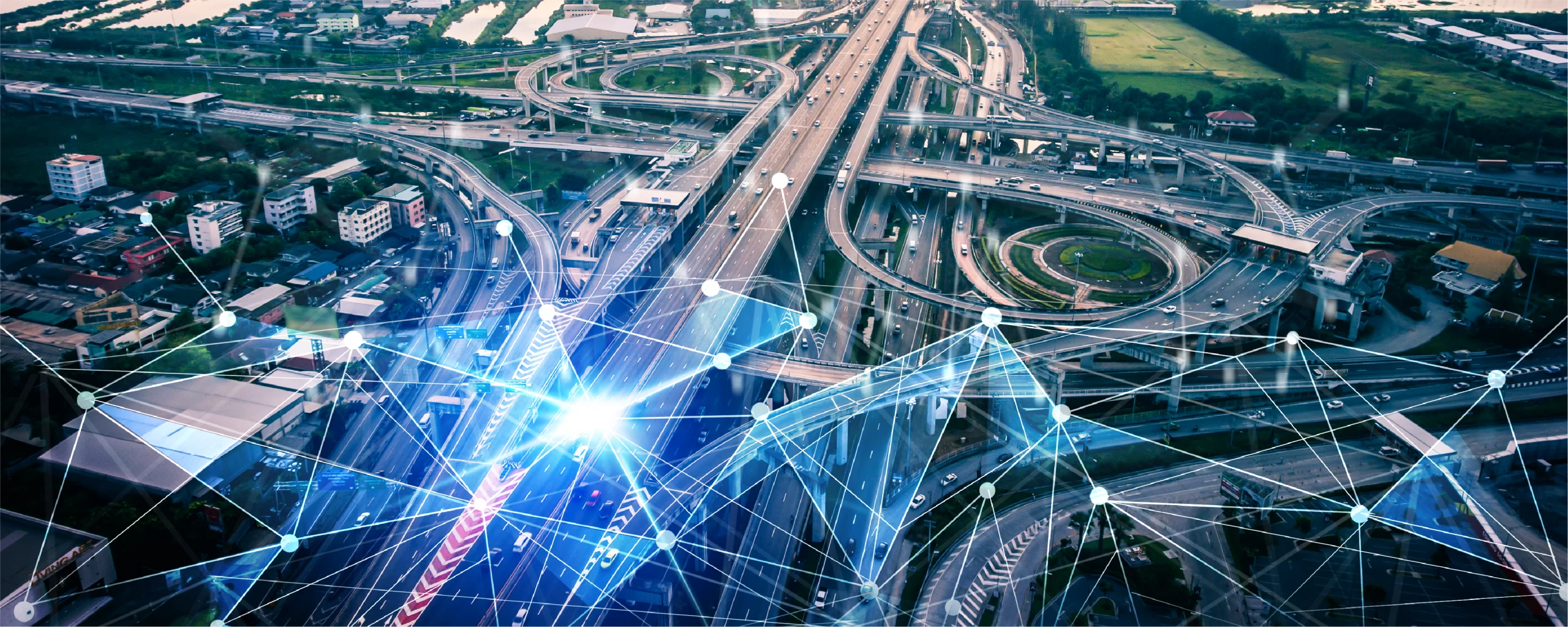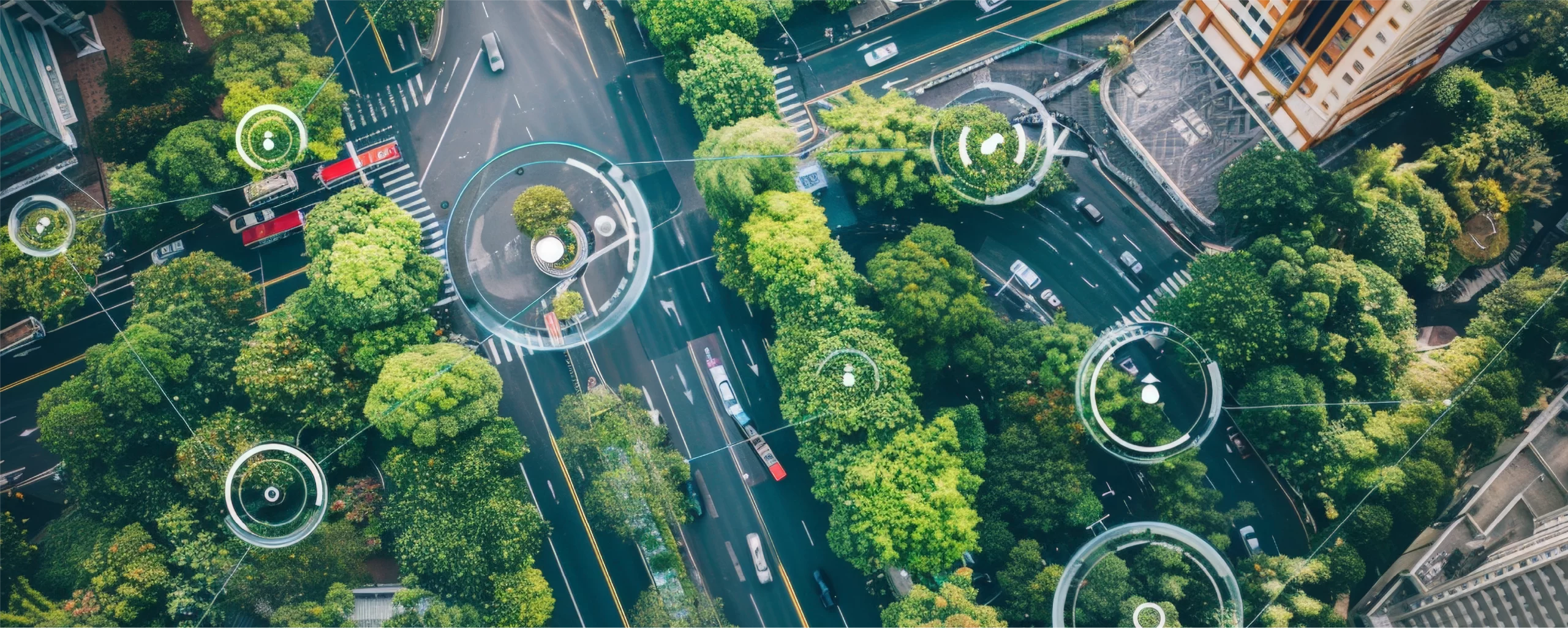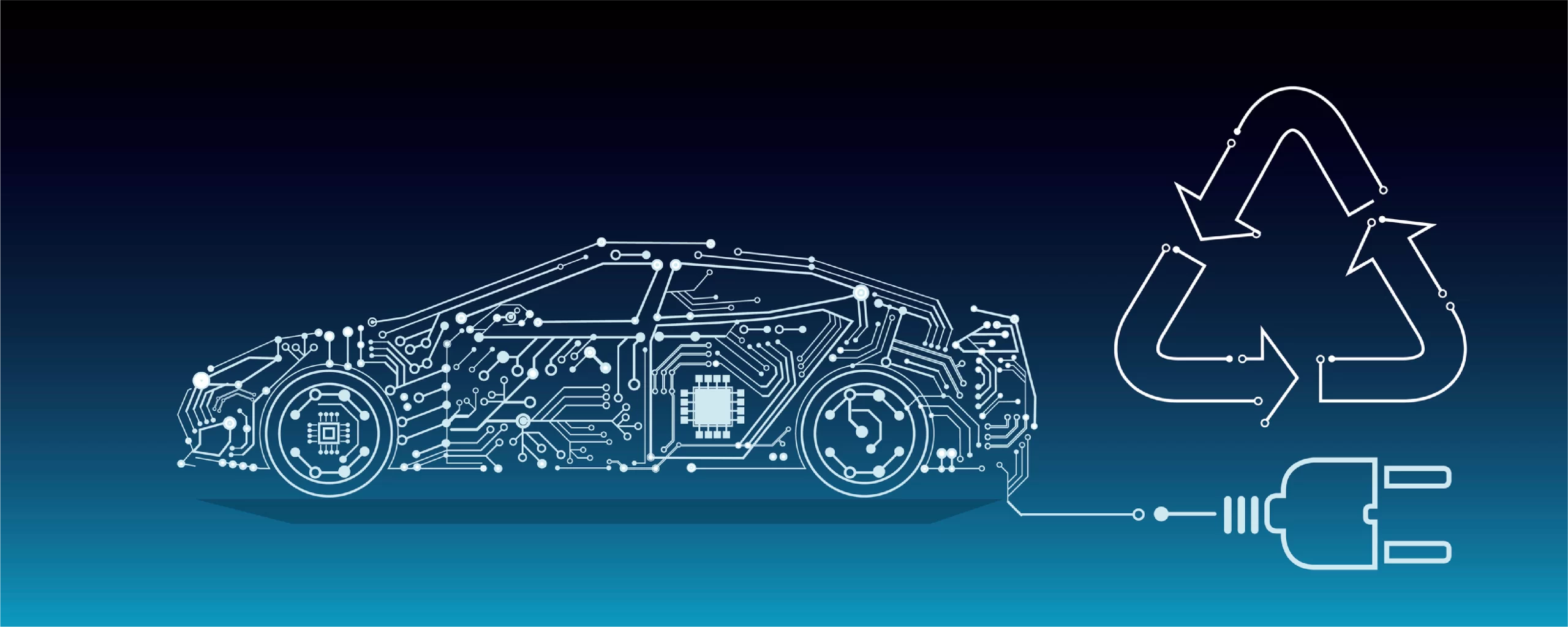AI-based Traffic Coordination to Reduce Congestion
Traffic congestion has transformed from a mere inconvenience to a measurable hindrance to urban prosperity. According to INRIX’s 2024 Global Traffic Scorecard, traffic congestion in the U.S. accounted for more than 4 billion hours of lost time and approximately $74 billion spent by drivers in 2023. Worldwide, major urban areas underwent comparable trends, as traffic congestion caused considerable time waste, heightened fuel usage, and financial pressure. Traditional controls—timed signals, and CCTV monitored by operators—were never designed for the current traffic volumes or intricacies.
Artificial intelligence is bridging that divide. When combined, machine learning predictions, computer vision analysis, automated license plate recognition, and real-time event detection allow artificial intelligence systems to modify traffic signal methods dynamically, issue alerts about possible dangers, and coordinate emergency responses. This results in a more efficient activity flow, reduced accidents, and data-informed management of roads.
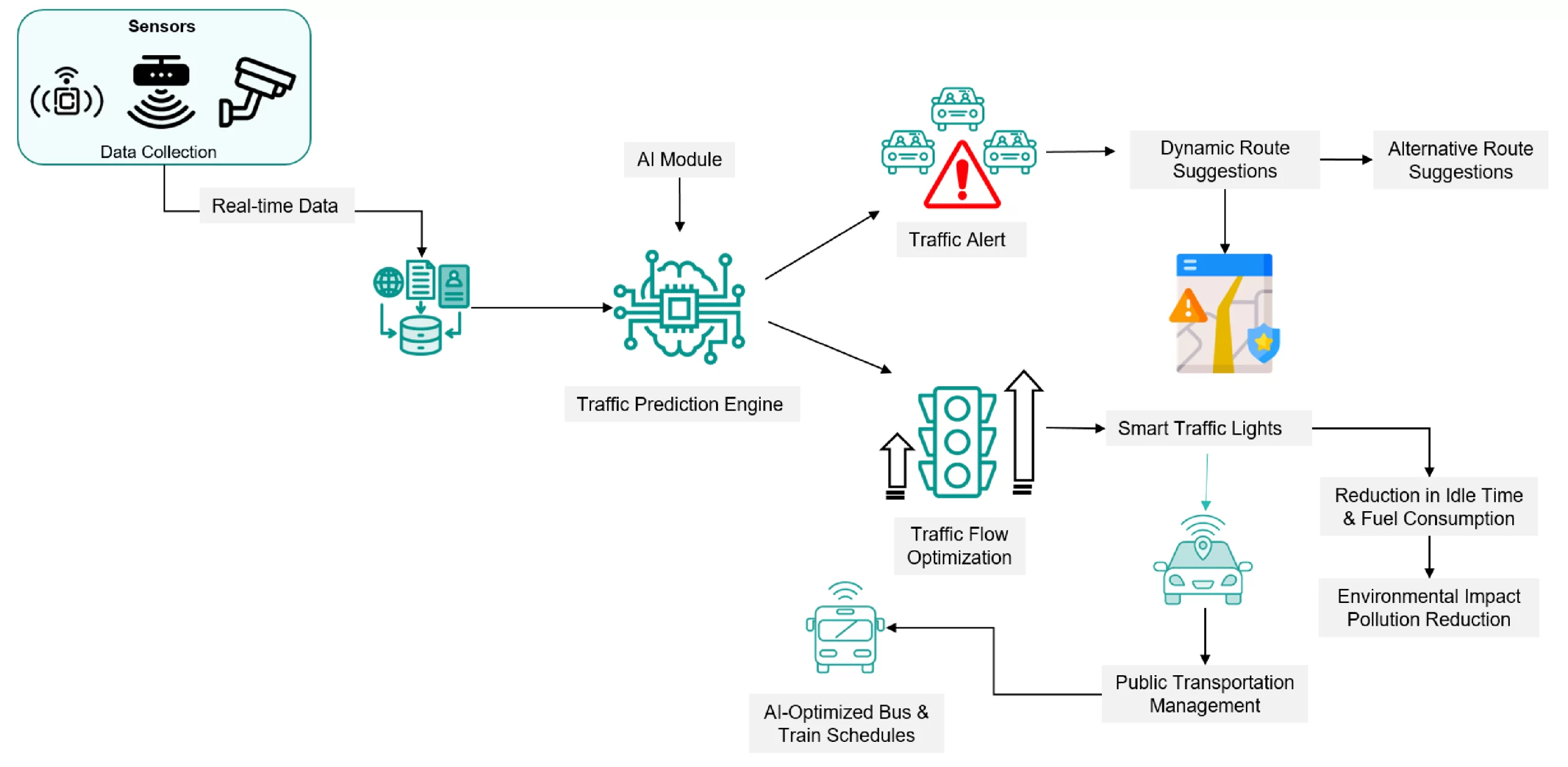
Major Causes of Traffic Congestion
- Inefficient Signal Control
Legacy, fixed-cycle traffic lights are rarely coordinated across corridors and cannot react to live demand, creating long, needless queues and markedly heightening collision risk at busy urban intersections
- Blind Spots in Real-Time Data
When drivers, fleet managers, and control centers lack up-to-the-minute network information, vehicles unknowingly funnel onto already saturated routes, rapidly compounding density, delay, and commuter frustration
- Occurrences and Mishaps
Roadside incidents, false vehicles, and illegal parking spaces can hinder vital lanes, disrupt traffic movements, leading to delays in peak times and bad weather, especially during peak times
- Errors Made by People and Risky Behaviors
Wreckful speeding, distractions from phone use, and regular road rules not only lead to avoidable accidents, but also generate sudden stops with shock waves driving in the hallway
- Inadequate Infrastructure and Upkeep
Restricted roads, lack of turn lanes, inadequate signage, and poorly maintained surfaces greatly diminish adequate capacity, turning typical peak traffic into nonstop, all-day congestion
Role of AI in Traffic Coordination
Due to fixed signals and manual oversight, conventional traffic systems struggle with real-time disruptions. AI enables adaptive control by analyzing live sensor data to adjust signals, reroute traffic, and prioritize emergencies. Learning from evolving patterns, AI systems improve flow, reduce delays, and allow cities to respond proactively to congestion and unexpected events.
Core AI Technologies in Traffic Management
This shift from reactive to predictive traffic control is powered by four key AI technologies: machine learning, computer vision, big data analytics, and sensor fusion. Each plays a distinct but interconnected role.
- Machine Learning (ML) facilitates predictive control by examining historical data, from detector logs to weather patterns, to recognize typical traffic trends and unexpected surges. This supports anticipatory approaches such as adjusting signal timings or designating flexible lanes before traffic congestion
- Computer Vision (CV) analyzes real-time video streams at the edge, employing deep-learning algorithms to recognize and categorize vehicles, assess lane occupancy, and spot dangers like halted vehicles or crossing pedestrians. It additionally facilitates the automatic recognition of license plates and the enforcement of traffic regulations
- Big Data Analytics combines large datasets from cameras, sensors, connected vehicles, and GPS data. These insights enable quick recognition of congestion sources and facilitate immediate modifications
- Sensor Fusion integrates cameras, radar, LIDAR, and GNSS data to develop an accurate, real-time traffic conditions model. It addresses each sensor’s shortcomings and improves decision-making precision
How AI is Used in Smart Traffic Coordination
Artificial intelligence revolutionizes traffic operations by enabling systems to monitor, forecast, and actively manage traffic conditions in real time. Its impact is seen across five key areas:
- Real-Time Surveillance and Forecasting – AI-driven platforms ingest continuous data from cameras, GPS, connected vehicles, and IoT sensors. Computer vision algorithms detect traffic patterns, vehicle types, and anomalies like stalled cars or debris. Machine-learning models combine real-time and historical data to estimate current demand and predict congestion before it happens, allowing operators to act early and prevent gridlock
- Adaptive Signal Control – Traditional fixed-time signal plans are replaced by reinforcement-learning models that continuously optimize light cycles based on live traffic conditions, pedestrian activity, transit schedules, and incidents. These AI agents test thousands of scenarios in simulation and apply the best-performing strategies on the street. Edge computing ensures low-latency responses, while Vehicle-to-Infrastructure (V2I) communication informs approaching vehicles of upcoming phase changes
- Predictive Traffic Management—AI systems use time-series models like LSTM and ARIMA to forecast demand hours or days in advance. External inputs—weather, event schedules, roadwork, and even social media—enhance accuracy. The system can activate detour plans and deploy field personnel proactively based on predictions
- Smart Parking and Curb Optimization – Sensors monitor individual parking bays in real time. AI integrates this data into navigation and booking apps to guide drivers to available spots. For deliveries, dynamic curb-space allocation reduces double parking and improves freight flow.
- Autonomous and Aerial Coordination – Self-driving vehicles provide predictable movement, reducing stop-and-go traffic. AI-powered drones enhance situational awareness from above, especially in emergencies or poor visibility.
Benefits of AI-based Traffic Coordination
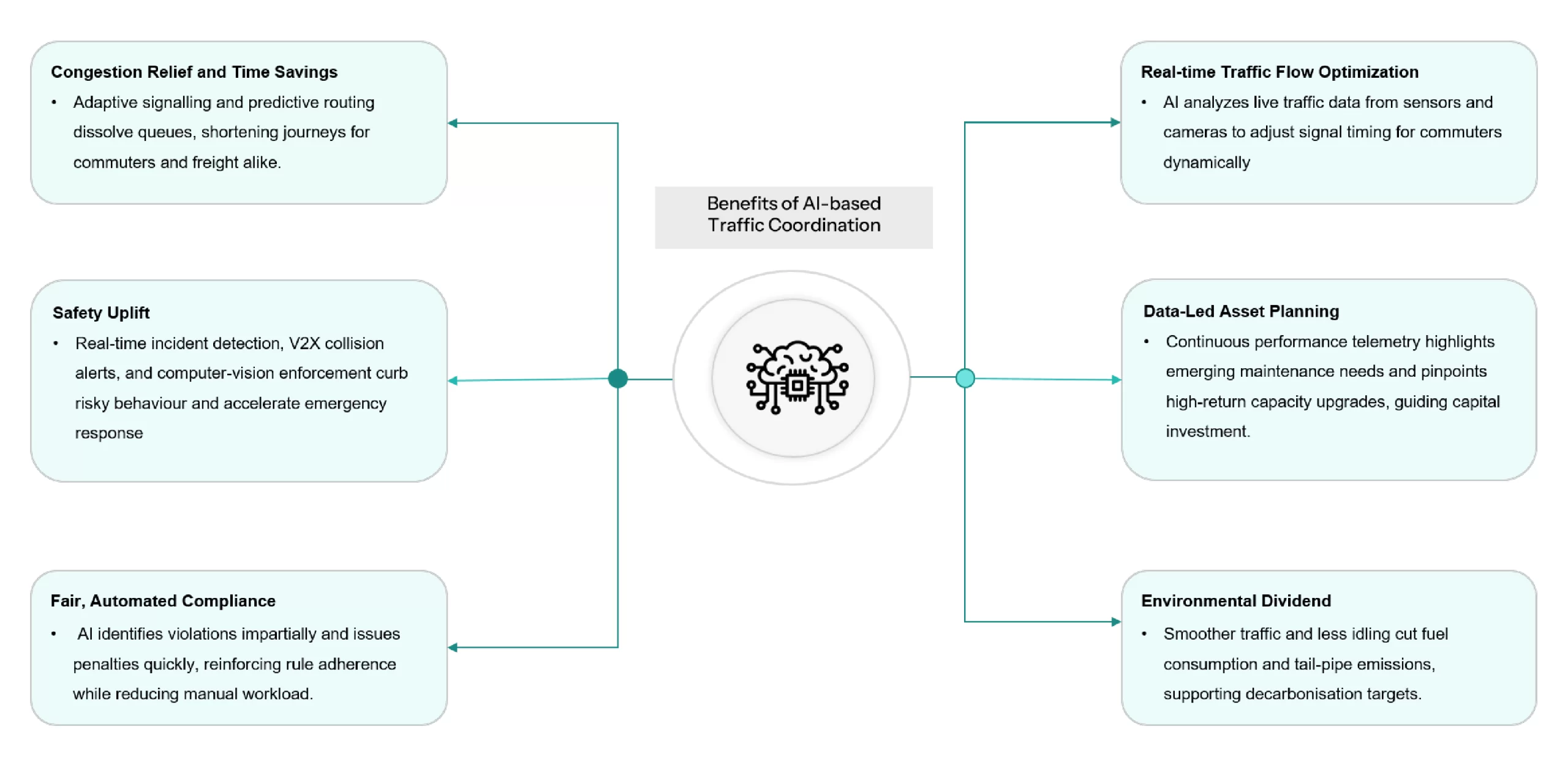
Real-World Applications of AI in Traffic Coordination
Artificial intelligence is now essential in contemporary traffic systems, assisting cities in managing congestion, improving road safety, and prioritizing public transportation. Globally, AI technologies are being utilized in significant, practical scenarios.
- Urban Signal Optimization – Major Cities like London, Singapore, and New York have adopted AI-based systems to manage real-time traffic signals. London’s SCOOT and the Real-Time Optimiser that followed manage more than 6,000 intersections, increasing travel efficiency by as much as 20% and boosting bus dependability. Singapore’s Smart Transport System employs real-time camera feeds, loop sensors, and taxi GPS information to manage traffic. In New York, a sensor-based network aids in reducing incident response times and alleviating congestion during peak hours
- Highway Management and Safety – AI enhances highway conditions by modifying speed limits and lane usage according to real-time traffic, accident, or weather information. Germany’s Autobahns and California’s controlled lanes utilize dynamic speed signs to mitigate accidents and traffic fluctuations. Pittsburgh’s Surtrac system continuously adjusts signal timings, leading to 25% quicker travel, 30% reduced wait times, and a 20% decrease in emissions.
- Transit Prioritization – Cities such as Bogotá, Hong Kong, and Manchester utilize AI to combine public bus data with traffic signals, minimizing intersectional delays and enhancing service dependability.
- Event and Incident Management – AI technologies forecast traffic increases during major events by examining ticket sales, social media, and historical patterns, allowing for timely signal and route modifications. Moreover, cities such as Singapore and Los Angeles employ computer vision to promptly identify accidents or obstructions, redirect traffic, and speed up emergency response by as much as 50%.
AI in Traffic Coordination – A Controversial Support
Despite its promise, deploying artificial intelligence at the heart of urban traffic control remains contentious. Four clusters of concern dominate the current debate.
- Technical Reliability and Cybersecurity
AI systems rely heavily on real-time data from sensors, GPS, and connected infrastructure. Failures in these inputs can result in poor decisions, such as mistimed signals or missed incidents, due to malfunctioning hardware or biased datasets. Moreover, expanding connected traffic systems increases exposure to cyber threats, with a breach capable of damaging an entire network. Robust encryption, system redundancies, and ongoing performance monitoring are essential safeguards.
- Cost and Integration Barriers
Many urban areas operate on outdated infrastructure. Upgrading for AI compatibility requires significant investment in field equipment, network capacity, and staff training. For smaller cities, these expenses may outweigh perceived benefits.
- Privacy and Trust Issues
AI systems often handle sensitive information like license plate data and CCTV footage. Even anonymized, this raises public concerns over misuse and surveillance. Transparent governance, strict data retention policies, and regular audits are necessary to maintain trust.
- Legal, Ethical, and Labour Impacts
Unclear liability in AI-related accidents complicates legal accountability. Additionally, AI may automate routine tasks, shifting job demands and raising concerns about equity in service delivery.
Addressing these issues openly, through standards, robust security, clear accountability, and inclusive design, will determine whether AI-based traffic coordination fulfils its promise of safer, greener, and less congested streets.
Key Players
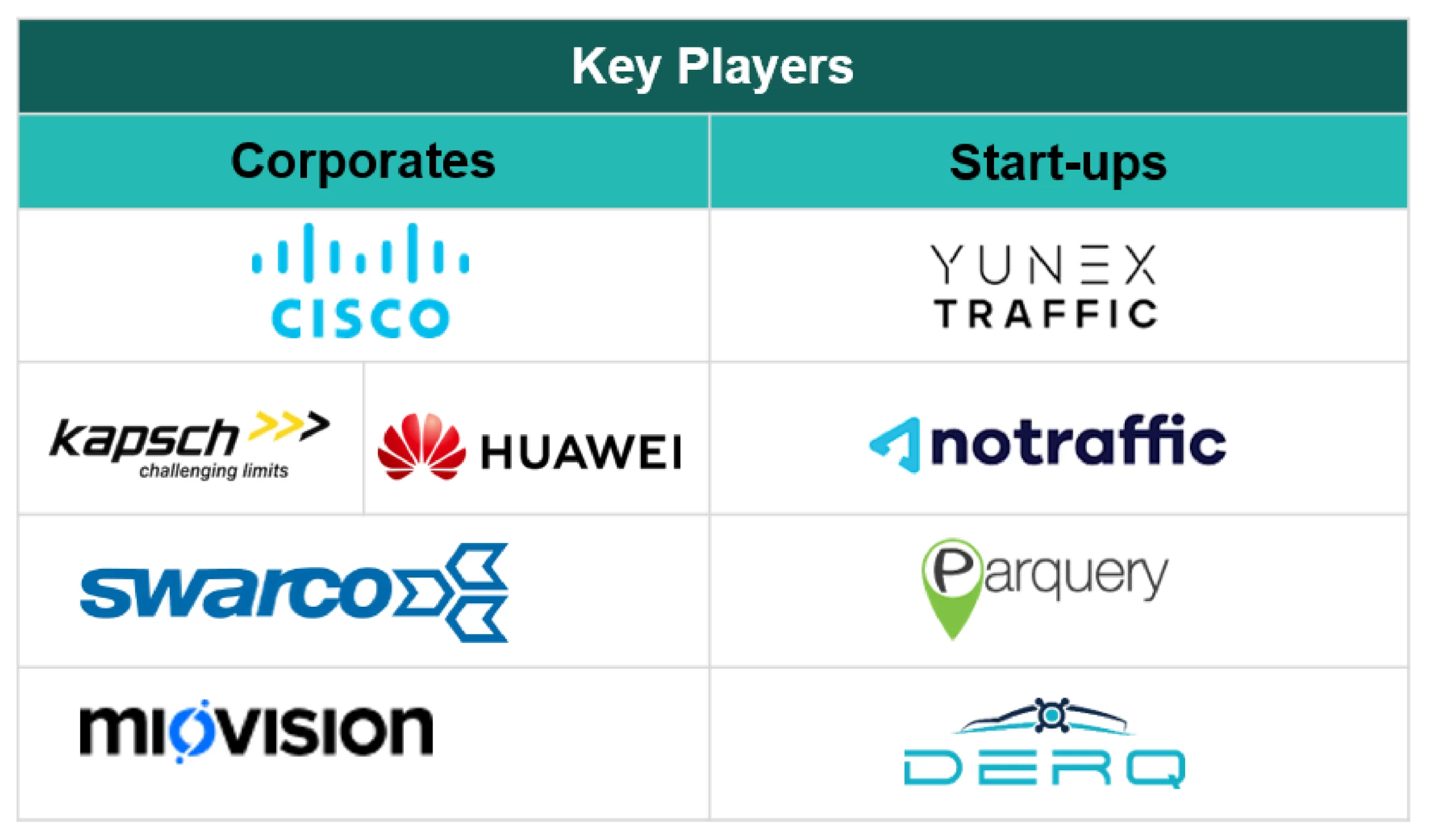
Kapsch’s EcoTrafiX™ platform integrates AI with real-time data from sensors, cameras, and connected vehicles to manage traffic flow dynamically. It enables adaptive signal control, congestion prediction, and incident detection. Cities like Buenos Aires and Vienna use the platform to reduce travel time, cut emissions, and improve response to traffic disruptions.
Yunex Traffic’s Yutraffic FUSION system uses AI-driven analytics to adjust traffic signals based on live intersection data. It forecasts vehicle volumes and optimizes signal phases to reduce stop-and-go traffic. Deployed in cities such as Prague, it has improved flow efficiency and lowered vehicle idling across busy corridors.
Cisco’s Connected Roadways platform powers AI-based traffic coordination through high-speed, secure communication between roadside infrastructure and control centers. It enables real-time updates for signal control and congestion alerts. By supporting low-latency data exchange, Cisco helps cities detect incidents early and respond with optimized routing strategies.
The Future of AI-Based Traffic Coordination Systems
AI-based traffic coordination is set to revolutionize highway congestion management. By leveraging AI algorithms, IoT devices, and advanced sensors, future systems will provide real-time visibility into road conditions, enabling instant detection of incidents and dynamic traffic adjustments like speed control and rerouting. AI will also support infrastructure monitoring and predictive maintenance to enhance safety. As connected and autonomous vehicles grow, AI will enable seamless vehicle-to-infrastructure communication, resulting in smoother flow, faster emergency response, and more efficient, low-emission highway networks.
Conclusion
Artificial intelligence transforms traffic management by developing prediction systems, adaptability, and instant response. Leveraging machine learning, computer vision, and integrated sensors, AI enhances traffic management, rapidly detects incidents, and modifies real-time routes. Cities such as London, Lisbon, and Singapore have implemented these techniques, achieving notable advancements in minimizing congestion, enhancing safety, and regulating emissions.
As city populations increase, AI becomes essential to contemporary traffic systems. The United States, China, India, and Saudi Arabia governments are significantly funding AI-based traffic management within larger innovative city projects. This transition from conventional reactive systems to smart, data-centric platforms guarantees scalable, sustainable, and resilient urban transportation for the future.
